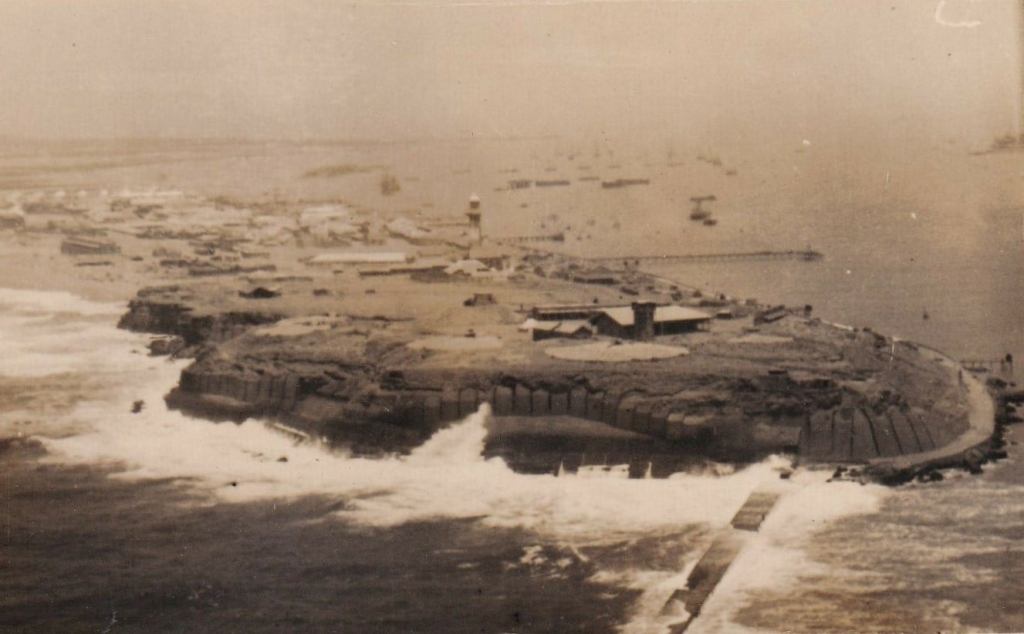By Dr. Sohail Ansari

3rd February 1839 was a game changer for Karachi. The Fort of Manora came under fire, when East India Company stormed and captured Manora, leading to fall of Karachi under the Raj. Four years later, the rest of Sindh was also captured. Karachi was required as part of British strategy in Anglo Afghan War, due to it’s location. The port was what attracted the invasion, besides accessibility to Punjab and beyond. The history of Modern Day Karachi began with that capture. What was then a sleepy small fishing village quickly transformed into a major seaport. It soon became a big metropolis. The following century saw the growth of Karachi never witnessed before. This drawing was made on 2nd February 1839 as HMS Wellesley prepared to invade Manora under the command of Rear-Admiral Maitland.
Sir Alexander Burns had long recommended that ‘Kurrachee’ should be the first point to be occupied. In January 1839, Colonel Pottinger also advised that a force must go to Kurrachee, in order to take possession of that place.
H.M.S. Wellesley set sail with Rear Admiral Frederick Maitland, Commander in Chief on board to conduct the operations. The land forces were under the command of Brigadier Valliant.
On one hand negotiations were ongoing between the British and Talpur rulers who had already been squeezed hard. On the other, as a surprise, the Wellesley arrived unexpectedly all of sudden.
She attacked on the pretext that a gun was fired from the Manora Fort on their ship. It is controversial whether the gun was actually fired or not. If it was, there was debate on whether it was an actual act of belligerency, or a mistake, since the Manora Fort was grossly ill equipped for combat at the time.
The Fort of Manora was basically a mud made structure which was not really fit for defence. The Fort commander or ‘Killadar’ of Manora was a brave Baluchi soldier, Wasul Ben Butcha. There hardly were enough men in the Fort to think of them taking advance of firing the World’s super power navy. There were not even enough guns to hand. So, it is very unlikely that the Fort would have fired the ship. On that context, though, the British flagship 74-gun HMS Wellesley bombarded the Fort. It was completely smashed to smithereens by the bombardment. It engulfed the sky with smoke.
Despite all his pride the Baluchi Killadar was made to surrender and he hoisted the white flag. The army of British ground force immediately stormed Manora and Karachi. Consequently, the British took over Karachi on Sunday the 3rd February 1839 . It happened quickly within a matter of hours. Following surrender agreement, Karachi was formally occupied by the British on Thursday the 7th February 1839.
Seth Naomal Hotchand had corroborated with the foreign forces to help them plan the invasion and take siege of Karachi.
Manora turned out to be the gateway to the capture of Karachi (and subsequently of Sindh). The fortunes of the city changed and it witnessed an unprecedented growth in the following century.


Sir it was India at that time not Pakistan
… Pakistan was developed in 1947 .. Karachi
Was India not Pakistan .
You need to understand the true history
That Pakistanis we’re holding Indian nationality
Even after 1947 when the British left .
Even after 1947 all Pakistanis who were born
Even todate in Pakistan are technically
Indian .
What a ridiculous claim.It was British Empire.The passports issued before the independence of India & Pakistan ie Sub-continent was issued with the e stamp of British Empire. I have a copy issued to a family member in those days.It was issued for his frequent trips to the middle east.
Good piece of history and thanks for sharing with us.